Having just been revised down, the estimated population of San Francisco proper decreased by 4,356 from July of 2021 (838,402) to July of 2022 (834,046) and is down by 36,084 or 4.1 percent since July of 2020, representing the largest percentage decline in population across all nine Bay Area counties.
Santa Clara County recorded the largest Bay Area population decline in the absolute over the past two years (42,624), dropping from 1,925,225 in July of 2020 to 1,882,601, representing a 2.2 percent decline, with Contra Costa County dropping by 15,970 to 1,149,586, representing the smallest percentage decline for the Bay Area counties at 1.4 percent.
Overall, the Bay Area population declined by 177,400 or 2.3 percent from July of 2020 to July of last year, having dropped by 68,261 from July of 2021 to July of 2022.
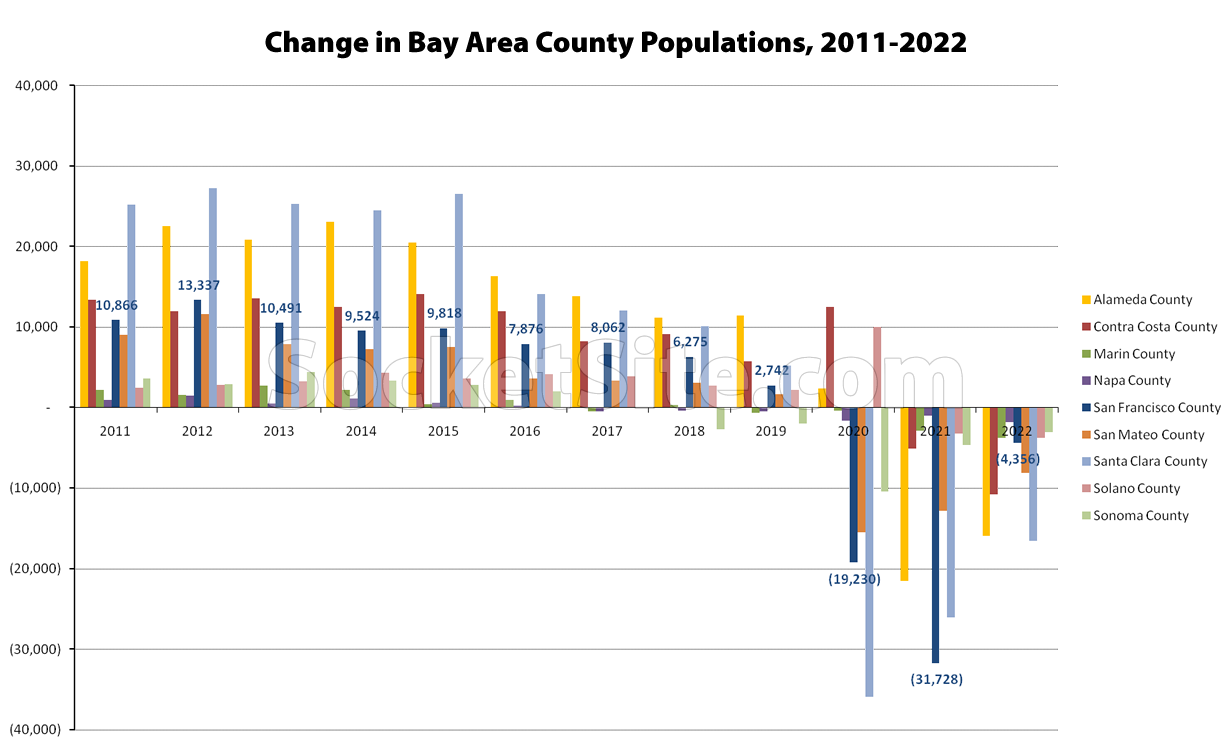
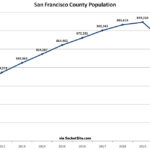
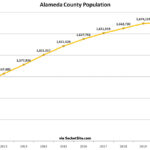
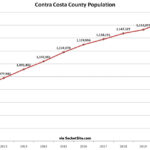
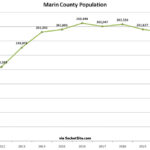
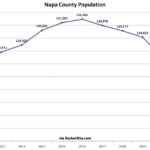
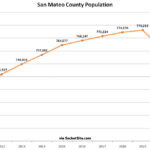
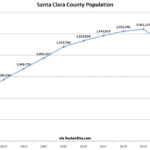
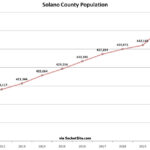
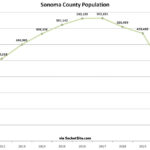
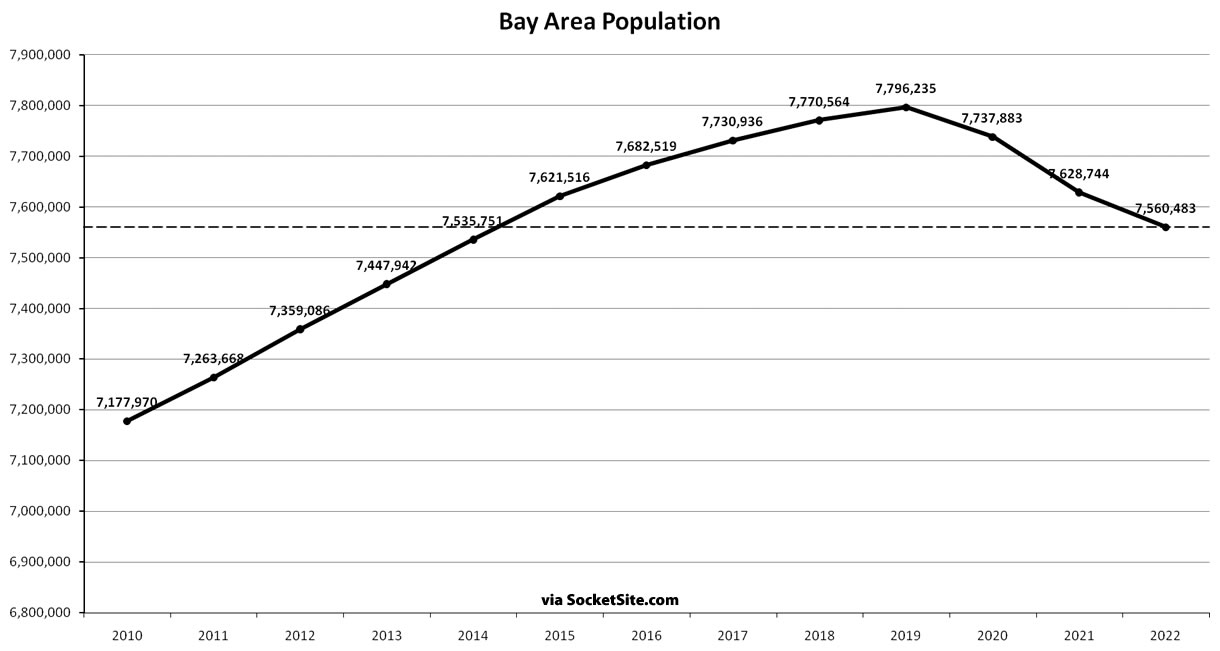
That’s impossible! I was told this was a far-right-right wing conspiracy theory!
At some point, facts and the ground truth catch up with wishful thinking.
Please provide a link to where someone reputable said the Bay Area, or S.F-specific population decline during the pandemic was a far-right-right wing conspiracy theory.
There might have been hangers-on in the S.F. real estate “game” on this site commenting that fleeing the Bay Area to work remotely would be tantamount to torpedoing your career, but it’s been fairly obvious to anyone paying attention that the high costs of living in The Bay Area weren’t sustainable for some time, and the pandemic was the thing that lit the fuse of outward migration. I don’t have survey results on this, but I suspect there was substantial overlap between the group denying this and the group that directly benefited from or participated in causing the runup in housing costs to a level where only working people in a single industry could afford to live here.
Remote work won’t be a panacea, but it will be welcome marginal reducer of demand. Perhaps S.F. and the Bay Area in general can go back to being more of a city for people who want to live here and those who have family connections and less for those from elsewhere who arrive with a “gold rush” mindset to cash in on the largess of Sand Hill Road, cash in and then leave with their “winnings” like Travis Kalanick.
Good points. BTW, the Bay Area had been experiencing sluggish and slowing growth (less than national average and even less than the LA area) prior to Covid.
+1
Is there a reliable source of data for the sources of this – how much is people leaving vs aging population/people not having kids?
The underlying data, which we compiled, is from California’s Department of Finance. We’ll have additional breakdowns and details
later today orearly next week.Not to complain – I’m not questioning the numbers and the labeling is correct – but I find the presentation confusing:
I believe most people will look at this as representing population, rather than the change in population (that is to say it’s a graph of the first-order derivative of population rather than the population itself); so under that mis-reading they’re going to think that
(1) the population peaked in 2012 (for the Bay Area), and
(2) it’s now growing again
neither of whiich, of course, is true.
While we can’t control for incompetency, that concern, which we share, will be addressed.
It will be very interesting to see the next few years play out.
– Housing production: Will SF actually produce 80K units in ten years. which is the goal? It seems hard to believe, and I’m an SF bull. If they can flood the market with units and prices drop, the population should increase quickly as SF becomes a good value all of a sudden.
– Remote work vs hybrid: Five days a week in the office is definitely gone. Whether we land at one day per week in office or three has huge implications on whether SF recovers or Santa Rosa booms.
– Street life / Guiliani Moment: There are a number of signs that moderates are winning and SF may have its Guiliani moment where small-level crime becomes a focus. Moderates won big in this last election. Together with a newfound magnifying glass on the $1B in handouts to non-profits every year, I could see a re-allocation of resources towards policing and street cleanup (graffiti removal etc), and less on social services.
I’m still ignorant about the housing element – but simply rezoning a bunch of parcels along transit lines does not guarantee that anyone actually builds anything there, right? Apart from a small set of projects that the city may fund, it seems that developers will vote with their wallets on what actually gets built and where.
Politically, things do seem to be shifting to moderates. Progress is slow and not linear. But I’m not holding my breath, and I’m enjoying SF in the meantime.
If The City can find a way for the math to pencil on these projects, the market rate housing can definitely happen. In my opinion, every possible fee the city takes should be removed for the next ten years to trigger the boom.
I have no clue how the affordable (aka money-losing) projects are going to get built, but I’m not too familiar with the financing options.
In the meantime, I’m enjoying SF as well. Everything outside of the downtown core and it’s immediate radius is doing great. The Panhandle area is booming.
Trigger the boom? How about we stop triggering booms. Capitalism needs to crack down on it’s serial rapists.
We have population loss and a huge budget shortfall. We also still have the second highest rental prices in the US. Finally, we have surface parking lots and a variety of other underutilized land.
We can solve all of those problems by building housing and therefor collect more taxes, lower rents and thus entice more residents, create temporary and permanent jobs etc.
” Finally, we have surface parking lots and a variety of other underutilized land.”
Class war never sleeps.
True, the real class conflict is between private Tesla storage at $30 a day and private development with 30-40% affordable units.
All Bay Area cities are failing to meet their housing mandates. 80K units built this decade? Hard to see how that happens. It’s an open question – does the state need to revise (down) these numbers. Given a slow population decline likely to continue throughout the decade and in light of economic reality. SF has the highest constructions costs of any city in the world.
Hybrid work is here to stay and that means SF will not be the jobs center it once was. Places like Santa Rosa will benefit in that scenario but also the exurbs. There is a paradigm shift coming in work/live patterns which will actually be more sustainable/green than the pre-Covid world where thousands of workers crowded into downtown SF each weekday. Commuting for hours/day and clogging roads while being ill served by public transportation.
The population decline is the effect. People move to Texas because there are houses for them there. People would fall all over themselves to build houses in SF if there was any path under the law to do it. And then people would move into those houses.
Agreed. The City of SF’s published figure is it takes DBI 3+ years on average to issue a simple building permit. The only path forward under the law in SF is for the extremely patient and well off.
At the same time, the pipeline of fully entitled and permitted projects that haven’t broken ground, which encompasses over 9,000 units of housing, has been on the rise.
Brahma is the bull here.
What ‘Panhandle Pro’, ‘Daniel’, ‘Pablito’ and the other shills for developers in this thread won’t tell you is that market rate housing, albeit housing aimed at the top of the local income distribution, is already being built at a rate exceeding State and Regional guidelines and without The City having to remove or reduce fees or greasing the skids of the permitting process for developers.
We know this because the amount of market rate housing built during the past seven years exceeded overall state-mandated housing goals set by the State and ABAG!. From Five takeaways from San Francisco’s annual housing report published Spring of last year:
Emphasis added. The all-singing, all-dancing free market and private developers are doing a bang up job of building housing for folks that can afford to pay top-level prices, but they are failing to build the housing that was and is being planned and zoned for in the price range of everyone else.
I think the reason the aforementioned chain yankers are here advocating for The City to do more to help line the pockets of for-profit developers of unnecessary luxury housing (“rezoning”, “cut fees”, more “prefab construction”, etc.) is because they realize that the more market rate housing aimed at the top of the income distribution is built, the more gentrification proceeds to displace residents in the bottom 90 percent of the income distribution and the more business opportunities there will be for people like themselves.
Right, and right on cue, the rental market peaked in 2015 and declined once that construction spree occurred. SF is now tied for Boston for 2nd/3rd in rental prices. It worked. We need to do more of that and push the average price of a 1 BR down to $2,500 next.
As far as Bay Area residential construction is concerned, the majority of the modular units that the Factory OS plant on Mare Island turns out are going into affordable workforce housing projects that are built by non-profits.
Not San Francisco, of course, we don’t need that. /s
Did something happen to the modular development to rise on Mission Bay South Block 9 while I wasn’t paying attention or did you forget about it? ‘Cause, you know, that was supposed to be built using upper floor modules constructed by Factory OS on Mare Island.
Local 38, the carpenters union and a couple more unions banded together to put the kebosh into future modular unit developments. There’s 833 Bryant, a handful more under construction including Mission Bay. But that’ll the end of that for the foreseeable future.
Agree with Daniel. FactoryOS is using union labor in their Vallejo plant.
As I understand it, all of their labor is from the carpenter’s union, and so you have nominally “carpenter” guys pulling wire and putting pipes in framing, jobs that would be reserved for those respective trades in stick-built “prevailing wage” projects under normal circumstances.
So, one obstacle to widespread adoption of modular, at least in San Francisco, comes back to dissent and turf-defense between unions.
This understanding is from a tour of FactoryOS that I took a couple of years ago, which was sponsored by a local pro-housing non-profit. It could be out of date, but that remains my sense of the situation.
The travesty becomes apparent when a SF union member is out there trying to find hosing for their growing young family. Which brings us back to the issue of a declining Bay Area population. It becomes a choice of no family or moving away.
I’m under the impression the housing element was passed just to pass it. My prediction: Legislation will be put in place to allow for the stated developments, including rezoning of the corridors mentioned. Perhaps they’ll cut fees as discussed. After that, it’ll be crickets. The City&County will continue to fail to actually turn around much housing themselves. Even more so in light of that projected $726 deficit for the coming two budget years, with a worsening outlook beyond. Meanwhile, the unions will see to it that the 40k “city family” receive their paychecks, and prefab construction stay out of this city.
Interesting stuff. Socketsite just posted a few days ago that the SF labor force has grown steadily since early 2021 and is just about back to its peak level. Only way I can square these two data sets is that SF now has fewer children and elderly (and other non-workers – trust-afarians?). The data here are only through July 2022, so the lag could also explain some of it. Lots of noise in the data until the pandemic effects ease, I suspect.
Also, would be interesting to graph this along with Case Shiller home prices to see if there is any correlation.
Unclear if the number takes into account the people moving to San Francisco in the same time frame. If it does, the raw number of people leaving is actually higher. Apologies if I am misinterpreting the numbers.
That’s correct, the population numbers above are net of all in/out migration.
SF will regain its former glory IF the cost/quality of living issues are addressed. These are important issues for any fresh graduate and/or young people seeking employment. The very members of our society that are most likely generate peak productivity and demographics. Otherwise, its pretty much a given SF is on a suicide run.
and families with kids are leaving as well due to the ppor state of the schools and the decrease in safety
Yep – its not a livable city for anyone considering raising a family. Almost everything about the city is children unfriendly. Immigrants (both foreign and domestic) have fed the demographics thus far. And now the cost of living has gotten to the point where the chances of profitable return for new prospectors (I don’t mean speculator) is not what it was before. Its just not worth it anymore.
This isn’t really true. The amount of school kids is basically the same as it’s been for 10 years slightly on the rise, the amount of people with kids is slightly up over the last 5 years or so as well. Yes it is expensive I agree, but I see lots and lots of kids around me and plenty of this city is kid friendly.
do you have access to that last 5 years of data? I know so many families whove either left in past year or are looking now. i know thats anecdotal, but curious to see data. We raise our kids here and were planning to leave if chesa boudin and school board recall failed. fortunately they worked. the best thing about SF for kids is that we have amazing parks and open space. but the city makes everything else toough and i cant imaging raising kids in certain parts of the city
You can see the data in a very easy to view graph on San Francisco Unified’s Ed Data page. If you scroll right to Cumulative Enrollment, you can see that the number for the year 2020-21 was 63,980 or down a bit over 13 percent since 2017-18. Perhaps the trend doesn’t appear to be as pronounced if you look back farther.
Of course 2020 – 21 was way down. There was this thing that happened, and it was kind of a big deal? They don’t have the 2021-2022 data up yet. That’s going to be way up over 2020-21.
Yeah, I feel so much safer walking down the street now that Chesa is out of office /s/
@sparky-b
Well if you dig deeper in the stats the actual story is about 50% of white kids in the City go to private school and about 15%/20% of Asian kids. And with the build-out of Asian language schools over the last 20 year I expect the Asian numbers to catch up sooner or later with those for whites. So for those who care about their kids education its basically private school for those who can afford it and move for those who cannot. That’s been the pattern since the 1980’s when the it was obvious that the totally collapse of the SFUSD in the 1970’s was irreversible.
If you can afford private schools (or can get your kids a place) and live in a nice neighborhood then SF is OK for kids. Not great. Cannot afford private schools and live in the large parts of the City which are terrible / dangerous for kid – well that’s why so many families have moved out of the City since the big migration of families first started in the 1950’s. Marin, Peninsula and outer East Bay are much better places to raise kids.
SFUSD is completely unreformable. As what happened to Arlene Ackerman so amply proved. Shut it down. Fire everyone. SFUSD employs more administrators than teachers. And give the money to parents to spend as they wish. They can buy a first rate private education for their kids for that amount of money per pupil wasted by the SFUSD. The majority on non classroom teaching spending.
So yeah. SF is a mostly terrible place for kids. If you do not have the income to insulate them for its profoundly dysfunctional public schools and large number of dangerous neighborhoods. Luckily I did. Otherwise I would have moved when the kids were very young. To somewhere much better for raising kids. For those who cannot afford the very high costs of raising kids in SF.
I wasn’t making a comment about where the kids go to school, I was replying to everything being unfriendly to kids (which it is not), and why the numbers are down so much (which they are not) and that being a recent thing with price escalation And poor public schools (which you show is the same as it’s been for a long time).
I don’t think there are a large number of “dangerous” neighborhoods nor do I think it is a “mostly terrible place for kids”. There are neighborhoods that are sh*tty with or without kids. There are also neighborhoods like NOPA that used to be sh*tty for families but now have them as they are much nicer.
I don’t have kids in either private or public schools, but I just am wondering: If tfourier’s varied assertions are correct, isn’t it a wonder that we had — until very recently — well…what Jake T might call a casual racist, immigrant born in China and a mother of SFUSD students as a San Francisco Unified school board commissioner? Who, I might add, during the most recent election also out-raised all of her opponents with more than $93,000 in campaign contributions?
I think that indicates there must be a significant constituency of Asian kids in City public schools, and their parents must be of the opinion that trying to improve the San Francisco Unified School District is worthwhile or why would they bother donating their time, money and energy?